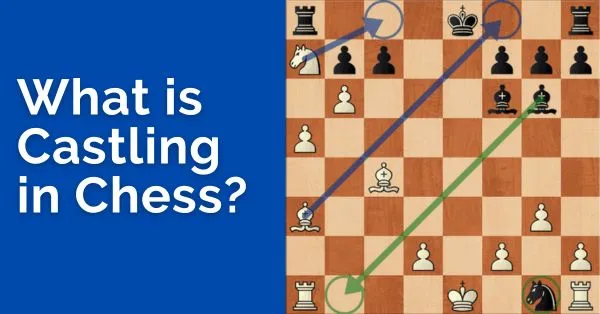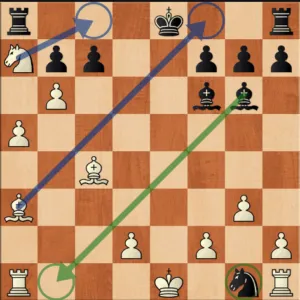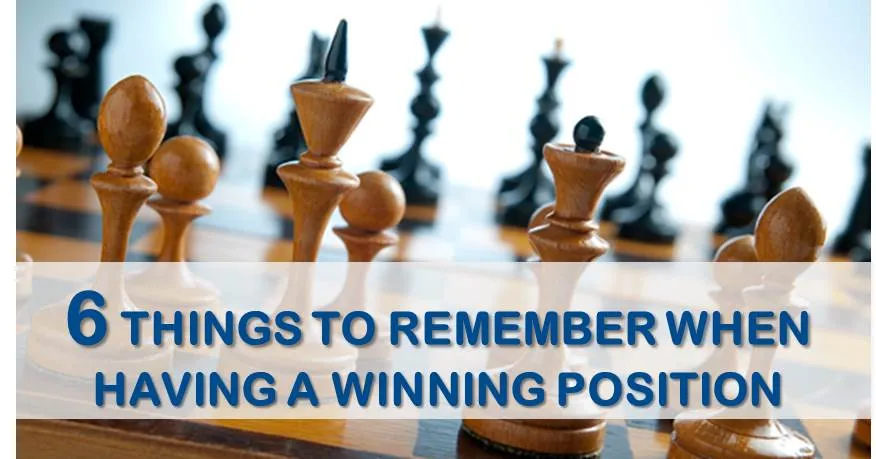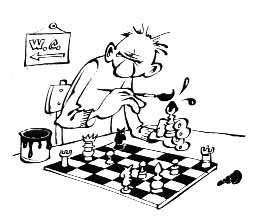What is Castling in Chess?

A specific move always catches the eye of the beginner in chess. This move at first sight looks so intriguing and bewildering for the new player that they immediately yell, “Hey, I think that’s not allowed!” Castling in chess has been a fascinating topic for debate in the chess community since time immemorial, from its first introduction to the current variants of chess in which castling is wholly eliminated.
In this article, we will learn the A to Z of castling in chess.
What is Castling – The Best Strategy in Chess Castling
You play the game with a single move at each turn. When beginner players associate a single move with a single piece Chess Castling can come out as a surprise.
Castling in chess is part of an overarching strategy in the opening stage. One can find the strategy behind Castling by taking a closer look at the powers of the king and the location of the major piece.
The strategy of King’s safety is a prime concern in the opening stage, and it is dangerous to leave it in the middle of the board, where it is more exposed to attack.
By castling, a player whisks the King away to the security of the Castle or in other words, a ‘fortress’.
Castling Basic Rules
Like any other move, this special move is also guided by rules. A common question by the beginner is what are the castling rules and how to castle in chess. The rules are as follows:
- A player may castle only ONCE during a game.
- You cannot castle in chess if either the King or the Rook has already moved at any point in the game.
- The King must not be in check (The King cannot escape a check by castling)
- The King may not move into check.
- All the squares between the King and the Rook must be empty. Neither can jump over any other pieces.
- The square that the King jumps over should not be under attack by any enemy force.
The rules of castling in chess might look daunting at first sight as they involve different scenarios but reading them a couple of times should help.
What is the purpose of Castling in Chess?
Pawns rush out from the get-go and pieces come out to battle in fiery steps. Amidst all this, the king is stuck right in the heat of the action. The king moves at a measly low pace and the player doesn’t want to spend too much time to move the king away.
This situation raises a dilemma. This is where the strategy of Castling comes in. In one whole swoop, the king moves away from the battle arena to move into safety. As a bonus, the mighty rook joins the battle as well.
How to properly castle in chess?
There are certain rules to properly castle as well. To initiate castling a player must FIRST touch the KING, move it to its castled position, and then touch the rook.
This castling rule applies to both Over the Board and Online Chess.
So, what happens if you touch the rook first? If a player touches the rook first then the player has to move the rook and is NOT allowed to castle!
That means a player instantly loses the right to castle on that side of the board. So, it is very important to remember to touch the king first while castling.
What is Short Castling – Kingside Castling
In Short Castling, the final position of the king is on the Kingside. The rules are identical for both the long and short sides of castling.
To execute Kingside castling the white player moves to king to g1 and the black player moves the king to g8.
What is Long Castling – Queenside Castling
When the King’s final position is on the Queenside then it is called the Long Castling or Queenside castle. The same method applies to this manoeuver as well. A player must remember the basic ideas and then execute the castling move in chess.
The white king goes to c1 and the black king goes to c8.
Castling rules involving the King
So, what are the castling rules that a king is bound by to perform castling moves in chess?
1. The King should not have moved to perform castle.
2. The King should not be in check.
3. The King should not move into Check.
4. All the squares between the King and Rook must be free of other pieces.
Let’s analyze these rules using an example:

White can only castle on the Queenside. He cannot castle on the Kingside (although he may be able to later) because there is a knight in between the King and Rook. (Rule No.4)
Black cannot castle on either side. He cannot castle on the Queenside (although he may be able to later) because the white knight on a7 controls the c8 square. (Rule No.3)
He cannot castle Kingside or Short castle(although he may be able to later) because to do so the King would have to cross a square controlled by an enemy piece (the Bishop on a3 attacks the f8 square)
So in conclusion in the following position, White can only castle Queenside and Black cannot castle.
Castling rule involving the Rook
Unlike the King, the Rook is bound by only a single castling rule to castle on any side. Whether it be a short castle or a long castle.
The Rook should not have moved previously to castle long or short.
What is the best strategy in chess castling?
To determine the best strategy for chess castling the player must ask one fundamental question:
Is Castling going to benefit my position?
In most cases, Chess Castling is a useful move you should play it without hesitation. Although like all scenarios certain exceptions exist and it may be a wise castle strategy to defer castling to a later time or not castle at all in those positions.
When Is It A Good Idea to Castle?
A player makes many decisions throughout the game. One of the most critical decisions a player can make is to decide on when and how to Castle.
To start simple. Two factors you can consider are the pawn cover in front of the king and the number of pieces that surround the king.
If you judge these factors correctly then you can make a castle at the right moment.
FAQ About Castling
Is Castling an Illegal move in chess?
NO, Chess castling is not an illegal move. However, You need to know the chess castling rules to legally castle.
Can you castle if pawns have moved?
YES, you can castle if the pawns have moved. Only the King and Rook shouldn’t have moved before.
Want to know more about Castling? Look at How to Do It as well as A Complete Guide.










Comments: